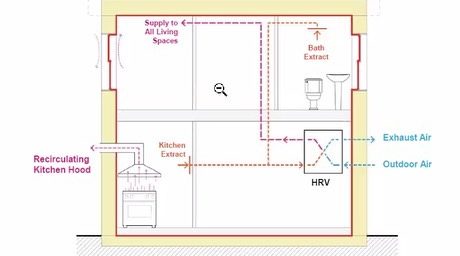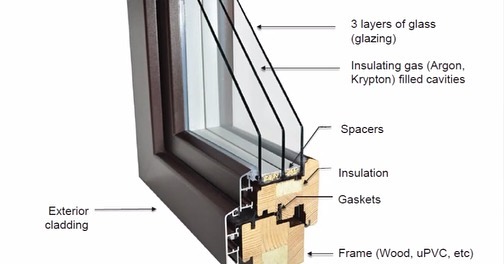What it means to live in a Passive House
Tomo House is being built to Passive House principles which fits well with our cohousing community’s commitment to live as sustainably as we can. The positive impacts of this type of construction were brought home to us recently when we had a workshop on how Passive House is being applied specifically within Tomo House. This was led by Eric Lai from our development partner, Tomo Spaces.
A central take away from Eric’s presentation is that Passive House makes all aspects of climate control and ventilation easier than a regular project. For instance:
- If it is cold outside, the HRV (Heat Recovery Ventilator) recaptures heat before it is vented to the outside. Coupled with the extra insulation and triple-glazed windows, this makes heating our homes much more efficient and cost effective.

- If it is hot outside, the insulation is again key in keeping the sun and heat outside. On a recent visit to another Passive House, Little Mountain Cohousing, we noticed straight away how thick the walls are. Those pesky winter drafts will not be coming through those walls.

- Thicker walls also mean more sound proofing. We have a trumpet player as well as a tap dancer in our building. Hopefully they’ll be able to practice their craft to their hearts desire.
- Smart design elements also help to keep the interior cooler including use of cross-ventilation, integrated shading and overhangs.
- Keeping the heat outside is also helped by using smaller windows in Passive House projects, rather than the ubiquitous walls of glass seen in many condo developments.
- Passive House apartments have constant circulation of filtered air which is good news for projects close to busy streets. It also helps remove cooking smells and stale air.
- The heating and ventilation is controlled from within each apartment giving full control to the owners. It is anticipated that the need to switch on the heating will be much less than normal apartments. In fact the baseboards heaters are going to be half the regular size because we simply don’t need greater capacity.
While any home may struggle with extreme heat like we experienced this year in Vancouver, Tomo House is going to be a very livable space. As well as having cost benefits from lower heating or cooling, our homes will be more resilient, healthier, and lower footprint.